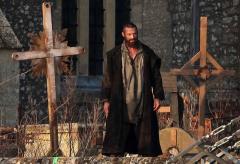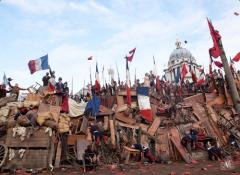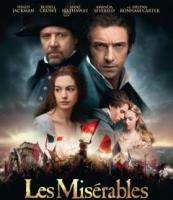
Adèle Bossard
"Les Misérables" does not rise above the musical.
“Les Misérables” is definitely a never-ending story. Written by Victor Hugo in the nineteenth century and finally published in 1862, the novel has been serialized into movies, animations, radio shows, comics, plays, and a successful musical that opened in 1985 in London, where it is still playing today, under the direction of Cameron Mackintosh. This famous musical has inspired a 2012 movie directed by the British director Tom Hooper. Written in the nineteenth century, the French novel depicts the life of miserable people in Paris and provincial France. Hugo's aim was to denounce the degradation of a starving women and the devaluation of a man by his proletarian condition. “Les Misérables” is recognized as a great humanitarian work that encourages passion and love in the context of adversity and injustice. The literature of this time, of Hugo, Zola or Maupassant, is distinguished by a realistic touch that confers a genuine historic value.
The main character, Jean Valjean, has just been released after 19 years in a penal colony and decides to repent, under the guidance of a generous bishop. Six years pass, he has changed his identity, owns a factory and is the mayor of a French village. There he meets Fantine, a “grisette” (an old French word for a charming working woman) who sells her hair and her teeth and resorts to prostitution to pay for the care of her illegitimate daughter. While Fantine is dying, Valjean finds her daughter, Cosette, wandering in the woods by night and decides to take her under his wing. They flee to Paris and ceaselessly try to escape the adjutant-guard Javert, who tracks Valjean since he broke parole in the colony.
Meanwhile, we follow the Paris uprising of 1832, an unsuccessful
anti-monarchist insurrection led by student societies. This is precisely
what makes the original French book a detailed portrait of the nineteenth
century French politics and society. The human story emphasizes
three major predicaments of the age: the degradation of proletarian
men with Valjean, the subjection of women through hunger with Fantine
and the atrophy of children by darkness with Cosette.
This may be why the movie, and before that the musical, have been so successful in English-speaking countries but not in France, though the book is there still considered as a pillar of the French literature. The appetite for happily ending stories and hopeful destinies might speak better to Anglophones although it is not totally to the taste of French audiences. The movie accentuates the love stories and the fight for change and social justice, putting aside the historic background that was so important to Hugo. The movie seemed to me too far away from the spirit of the book, dwelling more on human feelings than illuminating the society of this time. Indeed, the movie is inspired by the musical, not by the book. This is also why Tom Hooper's ambitious wish to replace dialogue with songs (that are not lip-synched) turns out well for Anne Hathaway's great performance as Fantine in the first forty minutes of the movie, but gives way to a heavy and even sometimes ridiculous feeling in the whole thing. The musical may have conferred new recognition to Hugo's work. Its adaptation to cinema was risky, and it doesn't seem to have found its proper identity as a movie. It even ends like a play, with a scene where all the characters come back to life on the barricades, just like actors bowing to the audience at the end of their show.
If you go:
Adèle Bossard is a free lance writer from Saumur, France. |
| museums | NYTW mail | recordings | coupons | publications | classified |





